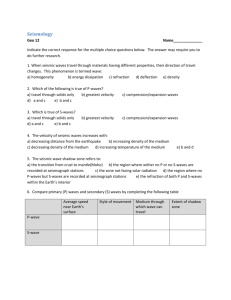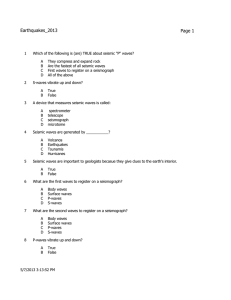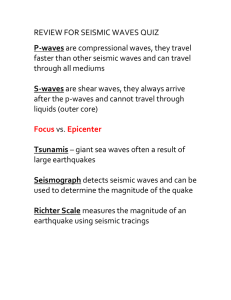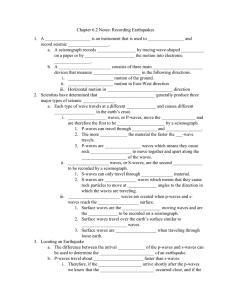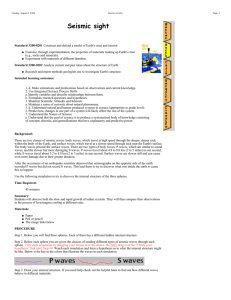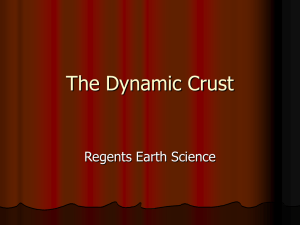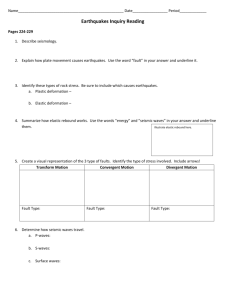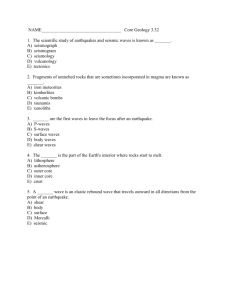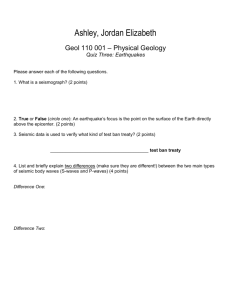seismic waves - Contemporary Science Issues
advertisement
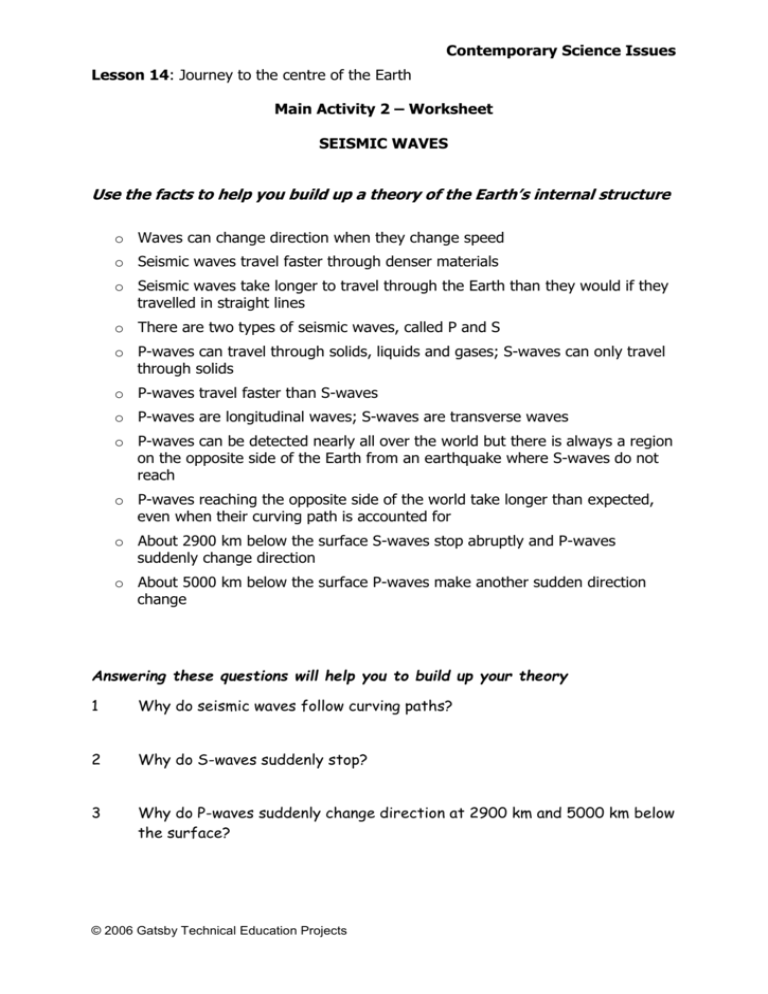
Contemporary Science Issues Lesson 14: Journey to the centre of the Earth Main Activity 2 – Worksheet SEISMIC WAVES Use the facts to help you build up a theory of the Earth’s internal structure o Waves can change direction when they change speed o Seismic waves travel faster through denser materials o Seismic waves take longer to travel through the Earth than they would if they travelled in straight lines o There are two types of seismic waves, called P and S o P-waves can travel through solids, liquids and gases; S-waves can only travel through solids o P-waves travel faster than S-waves o P-waves are longitudinal waves; S-waves are transverse waves o P-waves can be detected nearly all over the world but there is always a region on the opposite side of the Earth from an earthquake where S-waves do not reach o P-waves reaching the opposite side of the world take longer than expected, even when their curving path is accounted for o About 2900 km below the surface S-waves stop abruptly and P-waves suddenly change direction o About 5000 km below the surface P-waves make another sudden direction change Answering these questions will help you to build up your theory 1 Why do seismic waves follow curving paths? 2 Why do S-waves suddenly stop? 3 Why do P-waves suddenly change direction at 2900 km and 5000 km below the surface? © 2006 Gatsby Technical Education Projects
